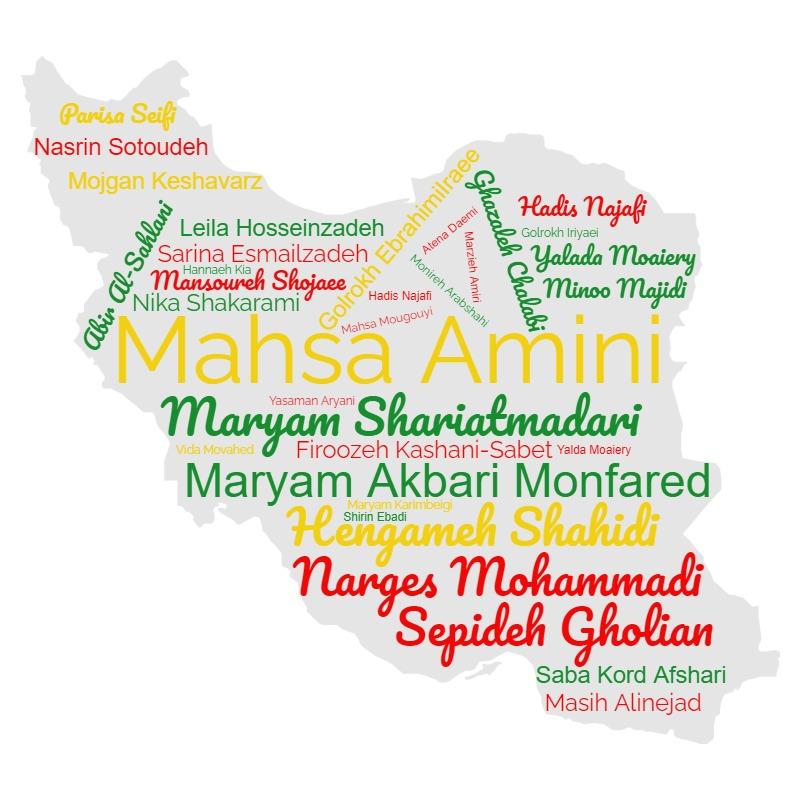
On Sep. 13 2022, a woman named Mahsa Amini was detained for wearing her headscarf ‘incorrectly’ in the eyes of the Basij, the enforcers of the Islamic dress code, which requires all women to cover their hair with headscarves such as hijabs. She was taken against her will to be “reeducated” in Vozara detention center, and three days later, she was reported dead. It is unclear what caused her death while in custody, although many believe it was caused by mistreatment and abuse. The police state that “Amini had a heart attack and fell into a coma,” according to Microsoft National Broadcasting.
Women, life, and freedom: these three words have been ringing throughout the streets in Iran by young women demanding their freedom for the past 8 weeks. When the news of Amini’s death spread, young women all over the world were outraged, and Iranian women took to the streets in protest. All over the world, women have been fighting for their basic human rights for decades. This fight has been never-ending for women since the early centuries, and in some cases, the scene has been bloody.
Iranian women fight for the bare essentials daily, things like choices over their clothing and access to education, but it hasn’t always been like this.
“We Iranians are proud to say that we’ve had some of the earliest women’s rights laws on the books 2000 years ago,” said Amir. Amir is a proud Iranian, but witnessing the lives of young people at stake can rattle the way you view the world for any person including himself. Amir was 9 years old when he left Iran, having left due to the danger his family was in amid the forming of the Islamic Republic.
Amir saw the Iranian revolution through the eyes of a 5 year old boy, witnessing the current Islamic government and laws being built from the ground up. This sight is hard for any person to see, but a young child doesn’t know the difference between what is happening and what’s normal. Much like children who have grown up during the COVID-19 pandemic, who until recently didn’t know that masks and distance were abnormal, Amir shared that after leaving Iran he saw many cultural differences between the US and Iran, such as in Iran, family is your backbone, your only aid when things go wrong, due to the lack of protection from the government.
He went on, saying, “[in the US], we take pride in speaking our mind and having the right to speak our truth. Over [in Iran], that’s not considered street-smart, doing that could be a matter of life or death and imprisonment.” This is why the young women fighting in the streets of Iran is so impactful, because every person that is protesting against the compulsory hijab is laying down their lives in order to be free, a luxury that is often taken for granted in other countries.
The headscarf and hijab have been a symbol of control over women since the Islamic dress code began in Iran. The headscarf is a way that the government can control the people, more specifically, the women. “Think about how scary it is to the government,” said Amir, “[that] females are saying ‘we’re no longer going to wear the headscarf.’” Removing the headscarf is directly challenging the government, and not only are women doing so by removing them, they are also burning them in public and cutting off their hair in protest.
In Iran, hair is a symbol of honor and dignity, and hijabs signify protection and obedience, so the idea that women are removing both, is an unfathomable idea and a sign of their bravery. Most protests directly defying the government end with murder and harsher rules, but these protests have carried on for almost a month with no sign of stopping. The protesters no longer fear the government, they are only more motivated to continue the fight. This makes these protests more prevalent because, if there is no fear— only bravery and boldness— the government cannot silence them as easily.
Masih Alinejad is an Iranian journalist who is famous for her exile from Iran and advocation for Iranian women, both journalistically and politically. Alinejad created the My Stealthy Freedom movement, which shares pictures of Iranian women without headscarves all over Iran to promote opposition to the required practice. Alinejad believes that the rejection of headscarves and the will of the women fighting against the oppression will spark the beginning of the end of the Islamic Republic.
Countries all over the world are keeping their eyes fixed on Iran and their Women’s Revolution. Surrounding countries such as Afghanistan and Iraq have seen women removing headscarves in solidarity with Iranians. But France is not following in these footsteps; across the country, young girls are defending their right to wear headscarves in their schools.
It all comes back to the central idea of a woman’s right to choose. The more pushback against human rights results in more awareness, larger displays, and more activism. No government should control how people express themselves through clothing, especially if the only ones being punished for it are women. Women have risked everything, including their lives, for the lives of one another and the generations to come.


































